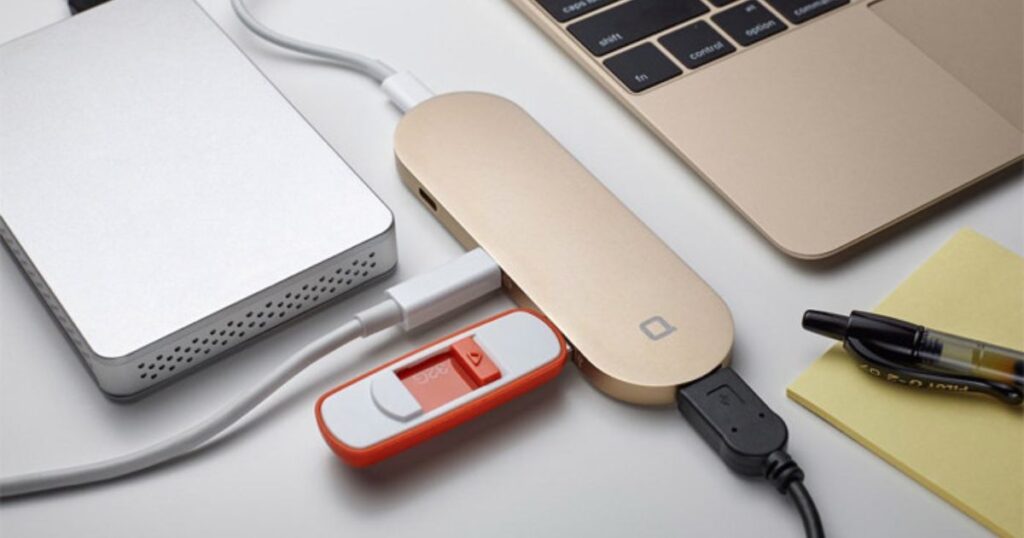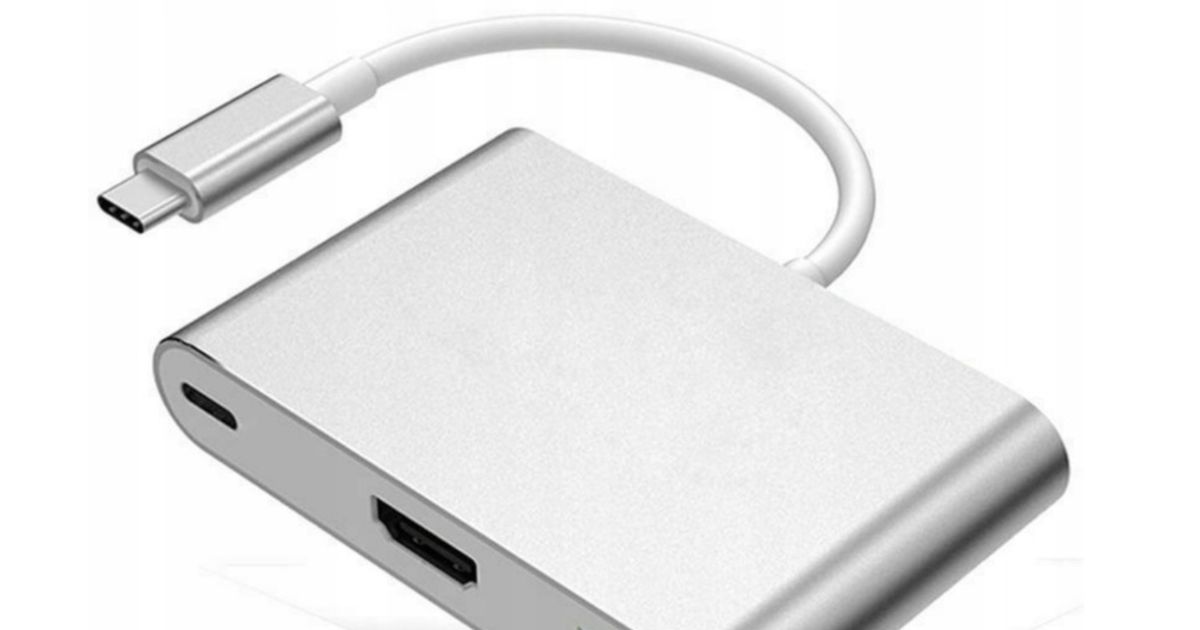As more devices adopt the versatile USB-C connector, it has become an important port for transferring data, charging, and displaying content. With a USB-C to HDMI adapter, you can output your laptop, phone, or tablet’s screen to an external monitor or TV. This allows for expanded viewing and productive dual monitor setups.
Going beyond Charging and Data
While USB-C handles charging and file transfers well, many forget it can also output video. By connecting your USB-C-powered device to an HDMI display, you gain a larger canvas for both work and entertainment. Whether giving presentations or streaming movies, an HDMI connection completes the mobile experience.
Understanding Display Outputs
USB-C to HDMI adapters let you utilize your device’s full internal display potential. HDMI as the de facto standard for TVs means instant compatibility. This guide will help you get the most from USB-C video and choose the right accessories.
Understanding USB-C and HDMI

USB-C is the new reversible connector standard while HDMI remains ubiquitous for displays. USB-C enables not only power/data delivery but also alternate video modes. This allows USB-C ports to pass digital video signals through platforms like DisplayPort which HDMI then receives.
To take full advantage, it’s important to understand key standards like HDMI 1.4/2.0 and DisplayPort alternate mode. HDMI 1.4 supports 4K30 while 2.0 enables 4K60 and higher bandwidth. Check your device and display specifications to ensure compatibility.
USB-C Digital AV Multiport Adapters
These do-it-all hubs integrate HDMI along with extra ports for expanded connectivity from a single USB-C connection. Top models provide features such as additional USB-A ports, card readers, Ethernet, audio ports, and even USB-C Power Delivery for charging.
They offer a tidy, travel-friendly solution compared to carrying separate dongles. While not as robust as docking stations, multiport adapters provide essential I/O expansion when needed.
Multiport Adapter Features
Many combine HDMI output with additional ports for accessories, flash drives, or hardwired networking. Some also provide pass-through Power Delivery up to 100W for constant charging.
Adapter Compatibility
It’s important adapters support necessary standards like HDMI 1.4/2.0, DisplayPort Alternate Mode, and USB 3.1/Thunderbolt 3 speeds to ensure smooth performance across all connected peripherals and displays.
Choosing a Multiport Adapter
Consider adaptability needs versus some ports, build quality, reviews, and warranty protection from reputable brands when choosing the right multiport adapter.
USB-C to HDMI Adapter Compatibility
| Specification | Details |
| HDMI 1.4 | Maximum resolution 4K at 30Hz |
| HDMI 2.0 | Supports higher 4K up to 60Hz and HDR |
| DisplayPort Alternate Mode | Enables USB-C video pass through |
Verifying both your host device and displays support the appropriate HDMI standard, in addition to DP Alt mode, guarantees seamless video output up to the resolution of your display.
Choosing USB-C to HDMI Cables
For optimal extended display quality, the HDMI cable is just as important as the adapter itself. Premium cables provide:
- Higher resolution support up to 4K/5K
- HDR and wide color gamut capability
- Less interference for a stable picture
- Durability against bending without pixelation
- Lengths up to 6ft for flexible positioning
It’s recommended to match adapter specifications for consistent signal delivery without compromising performance.
Cable Features
Key considerations are cable type like fiber optic, conductor core material like copper, shielding, and certification for the latest standards. Premium components improve reliability.
Cable Compatibility
Verify cables are compatible with adapter and device resolutions as older cables may not support the full capabilities of newer technologies.
Top Cable Brands
Belkin, AmazonBasics, and Club 3D produce affordable, tested HDMI cables that complement many adapter models for seamless connections. Monoprice and Cable Matters offer professional-grade certified options.
Top USB-C to HDMI Adapter Brands
Some leading USB-C to HDMI adapter manufacturers offering reliable, quality products include:
- Anker: Inexpensive, small adapters with lifetime technical support.
- Satechi: Premium, Apple-friendly design quality with a lifetime warranty.
- Cable Matters: Affordable multiport hubs and docks with certification testing.
- CalDigit: Commercial grade docks for Thunderbolt PCs with professional support.
- StarTech: Industry standard; huge selection for every setup and certification.
Choosing from these reputable brands promotes dependable build, compatibility, and recourse should any issues occur down the road.
Common Uses for USB-C to HDMI
USB-C video output unlocks versatile uses. Here are some popular applications:
- Connecting USB-C laptops and Chromebooks to external monitors for extended desktop space.
- Using smartphones and tablets as media hubs for streaming or mirroring content on large TVs.
- Giving presentations from USB-C hard drives directly to projectors and screens.
- Combining the functionality of portable laptop docks and portable monitors.
- Attaching DSLR cameras to HDMI displays for digital photo frames or live previews.
The options show how USB-C improves mobility and flexibility across multiple device categories.
Setting Up USB-C to HDMI Displays
Follow these basic steps to quickly enable extended displays:
- Connect USB-C to HDMI adapter/cable to an HDMI port on your TV/monitor.
- Attach the adapter’s USB-C end to your laptop/device.
- Locate and enable Display Duplicate or Extend mode in your system’s display settings.
- Choose the appropriate resolution under Display Adapter Properties.
- Arrange screens by dragging with your preferred layout for ideal productivity.
Proper installation and setup takes only minutes to enjoy expanded views across multiple screens.
Connecting Adapters and Cables
Always connect HDMI ends of cables/adapters to displays first before connecting USB-C to host devices to avoid incorrect EDID handshakes.
Configuring Displays
Enable Display Duplicate/Extend modes under Settings > System > Displays instead of Single-mode to view content across all screens.
Choosing Display Modes
Duplicate replicates the desktop while Extend spans it across screens for a multi-monitor extended workspace ideal for productivity.
Troubleshooting Connection Issues
Common error solutions include:
- Try different HDMI ports if no video/black screen appears.
- Update the USB-C/Thunderbolt driver if the operating system cannot recognize the display.
- Use HDMI cable matched to the adapter’s maximum spec to avoid flickering/distortion.
- Replace low-quality/damaged cables causing intermittent video cuts or low performance.
- Reset preferences and restart all devices if connection problems persist.
- Confirm adapter/cable specifications fully support resolutions of connected displays.
With the process of elimination, many USB-C video issues have quick remedies.
Future of USB-C Connectivity

The latest USB 4 and Thunderbolt 4 standards continue pushing the boundaries:
- USB 4 doubles bandwidth to 40Gbps for faster 8K display and external storage speeds.
- Thunderbolt 4 delivers four Thunderbolt ports, and docks with 100W power delivery.
- HDMI 2.1 support enables higher resolutions up to 10K at 60Hz with next-gen displays.
- VirtualLink adoption simplifies VR headset connections with a single USB-C interface.
USB-C remains on track as the future-proof single cable standard across all devices by further merging power, display, and data functionality seamlessly.
Frequently Ask Questions
Does USB-C 3.0 support HDMI?
Yes, USB-C 3.0 and higher supports HDMI through DisplayPort Alternate Mode which allows USB-C ports to output video to HDMI displays.
What phones are compatible with USB-C to HDMI?
Most recent Android phones with USB-C ports like Samsung Galaxy, Google Pixel, OnePlus, etc. Also some newer iPhones. Always check your specific phone’s specifications.
Why won’t my USB-C to HDMI work?
Possible reasons are incompatible cable/adapter, displays not being detected, disabled settings, drivers needing an update, or device/port issues. Troubleshoot by trying different cables/adapters.
Can you do USB-C to HDMI?
Yes, with a proper USB-C to HDMI adapter or cable you can output video from USB-C laptops, smartphones or tablets to HDMI displays like TVs or monitors. It allows expanded viewing of your device’s screen.
Final Thoughts
USB-C to HDMI adapters deliver incredible versatility by outputting any device’s video signal to a larger screen. Whether mirroring or extending displays for productivity, presentations, or entertainment, they complete the on-the-go mobile experience. Properly configured, USB-C opens up expanded viewing possibilities for all.
As technology pushes higher resolutions and multimedia standards, USB-C connectivity evolves to keep pace. Upcoming advancements will further seamlessly merge power, video, and data across an array of devices through a single connection. For both work and play, USB-C to HDMI continues enhancing the mobile display experience today and into the future.
With the right adapter, cable, and setup process, USB-C unleashes your device’s full visual potential. By choosing quality products from reputable brands, you can optimize resolution and minimize issues. Connecting to an external monitor elevates productivity and enjoyment from any USB-C device wherever creativity and curiosity may lead.











